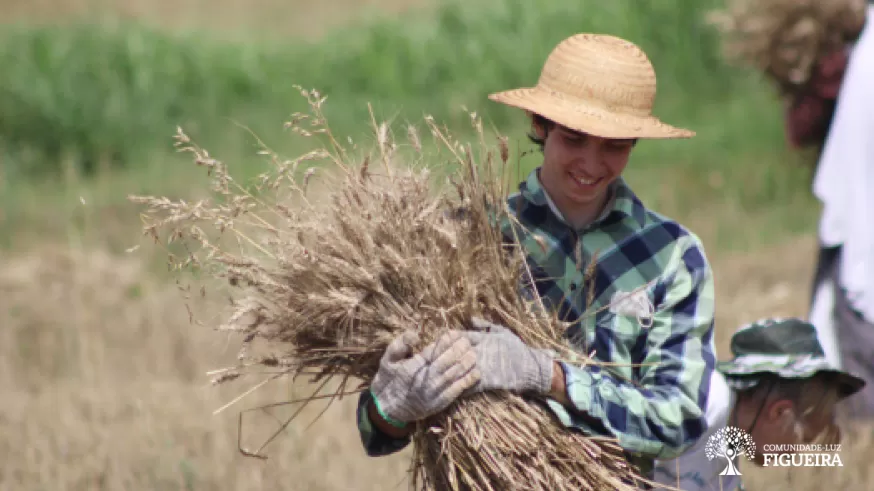Category: Environment
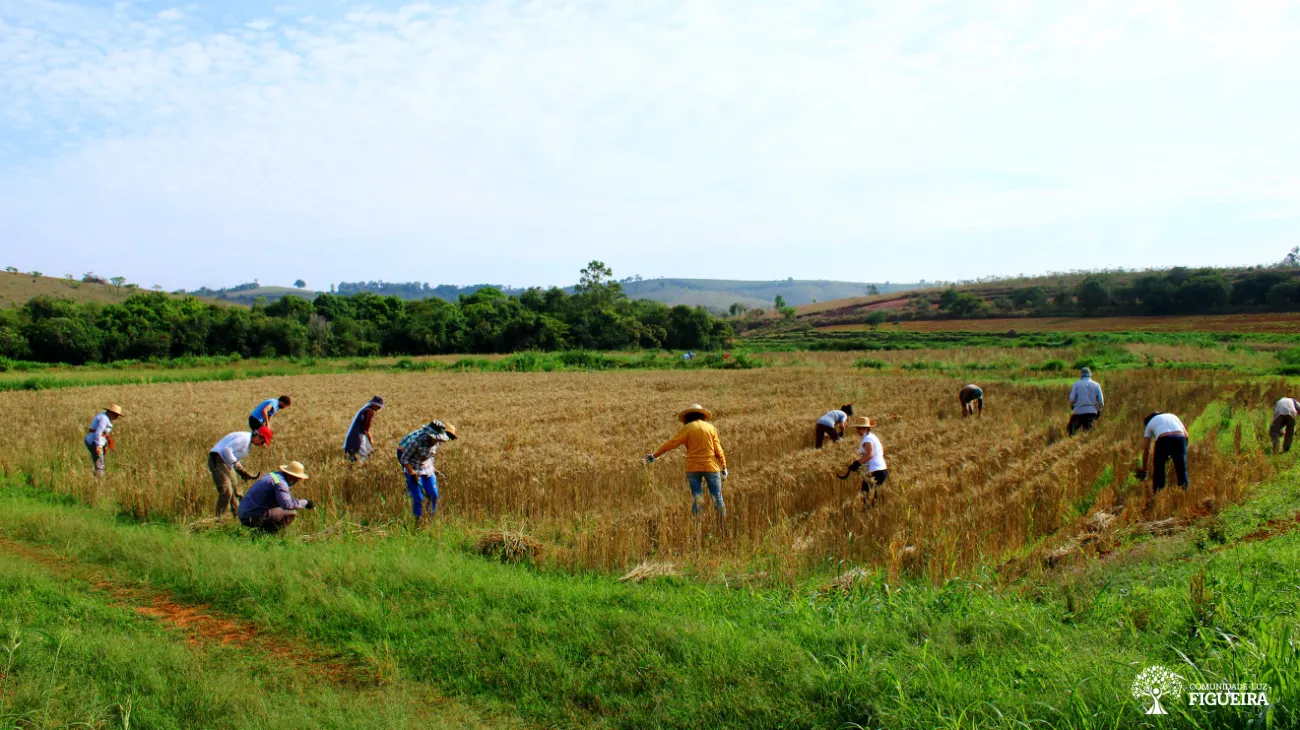
REFORESTATION ACTIVITIES THROUGH AGROFORESTRY SYSTEMS:
Reforestation, in general, consists of repopulating deforested areas to recover forests that were destroyed in the recent past.
Due to the loss of large forest masses, vital to absorb CO2, generate oxygen and stabilize climate changes, the intensive planting of trees in a conventional way, or through agroforestry systems (SAFs), it has become necessary to prevent the loss of ecosystems and stop the collapse of the planet.
However, reforestation contributes to the conquest of various objectives, all of them returning to the recovery of the cycles of nature, provided by the recomposition of the forests.
May 12 marks the International Day of Plant Health, a date instituted in 2022 by the Food and Agriculture Organization of the United Nations (FAO). One of the objectives of this date is to give greater attention to the improvement in terms of the health of soils, seeds and pollinators. By working with several plant species in consortium, agroforestry systems are an efficient alternative for the restoration of soil and ecosystem life.
The excessive exploitation of natural resources is the main cause attributed to human beings; when it comes to desertification and, as a result of that imbalance, we have inconsistent rainfall, longer periods of drought, soil and poor land erosion, as well as forest fires caused by climate change.
Faced with this scenario, reforestation is revealed as one of the most effective strategies to reverse this scenario.
The forests cover more than 80% of all terrestrial life species in the world, there are more than 60,000 tree species, 80% amphibians, 75% birds and 68% mammals. Its degradation and disappearance condemn hundreds of species to extinction and the increasing loss of biodiversity.
Human activity causes annual emissions of approximately 40 Gt (gigatonnes) of CO2. Half of these gases are in the atmosphere, contributing to global warming, and the other half is absorbed by forests and oceans.
Reforestation is, then, essential for our own subsistence: Forests are essential to stop climate change; Without them, the planet's average temperature will continue to rise, with the consequent rise in sea level and/or the melting of glaciers and the poles, among other climatic effects.
The trees of the forests -by restraining the energy of the winds and the force of the rains- protect the soil from erosion (eroded and infertile soils harm agriculture and contribute toward landslides and flash floods).
Reforestation in agroforestry systems aims to mitigate this situation, preserving soil fertility with well-fixed roots. The hydrographic basins, in turn, support the recovery of nutrients captured by these roots and put back into circulation through the water, structuring the soil for the practice of regenerative and sustainable agriculture, accompanying the successional cycles of nature (Sintropy).
Deforestation and its effects on habitats deprive us of essential nutrients, as well as being the main route of transmission for emerging infectious diseases. Degradation of forests, without adequate reforestation, exposes human beings to zoonotic diseases.
REFORESTATION THROUGH AFSs:
Study, planning and execution
What is an AFS and reforestation in an agroforestry system?
An AFS (Agroforestry System) can be understood as a form of land use where forest species, such as trees or shrubs, are managed in an integrated manner with agricultural plantations and, in some cases, with animal husbandry, in the same area, at the same time or alternately. Among the important characteristics that distinguish the AFS from other agricultural models are: the greater diversity of species, the use of perennial tree species and, in the case of a multistratified AFS (successional and biodiverse), the reproduction of the structure and functioning of a natural forest - such as forest succession, the interaction between the components of the system, whether plant or animal, and the levels of canopy and soil cover.
Legally, SAFs are defined as: land use and occupation systems in which perennial woody plants are managed in association with herbaceous plants, agricultural and forage crops, in the same management unit, according to a spatial and temporal arrangement, with high diversity of species and interactions between these components.
REFORESTATION or FORESTRY in SAFs
The management of an agroforestry system seeks to imitate the processes that occur in nature, such as the interaction between species, the cycling of nutrients and the efficiency in the use of sunlight, making it possible to reduce, or even eliminate, the use of external inputs (such as fertilizers and other industrial products). This allows you to reduce costs and increase the productivity of the cultivation area.
The more biodiverse an AFS is, the more it contributes to the ecological balance and to the reduction of damage caused by pests and diseases, while also being able to better withstand the increasingly frequent changes in the climate. This is why AFSs are considered more balanced, resilient and sustainable compared to conventional systems.
The AFS density and diversity between species is an important ally in the conservation of biodiversity, assuming the role of a true refuge for native fauna, providing food and shelter to birds, mammals, insects and other animals extremely threatened by the loss of natural environments.
The use of native plant species in the AFS can also help in the repopulation of those that are currently threatened with extinction, such as the juçara palm and the araucaria, as well as other native species.
In addition, the agroforestry system can contribute to improving the landscape, helping to recover ecosystem services - which are vital for the human population - such as water production, climate regulation, protection against erosion; in addition to promoting the rescue of values and cultural identities of the communities where it operates.
And how is a AFS made or structured?
1. Doing a field study
Firstly, it is necessary to analyze the terrain and check the local conditions: from the soil (depth, texture, fertility) to the climate (dry or wet season, humidity being essential), and the type of population that inhabits the ecosystem (native fauna and flora).
2. Choosing the species that will be planted according to the Biome of the region, the stratification planting and the forest arrangement
It is best to choose native species, but other fast-growing species, compatible with the soil and climate, can also be included.
Seedlings and forest seeds must be of good origin and quality, to preserve their genetic characteristics. The way and timing of transporting them are also important, avoiding the sun or strong wind currents.
3. Choosing a planting method
It is necessary to prepare the ground, choose the right tools and opt for the least invasive technique. In addition to that, the height and coverage that the crown of each new tree will reach must be considered so that the different species do not harm each other. It is important to highlight that planting does not end with the introduction of these new forest species, since a monitoring and management plan for post-planting cycles must be prepared.
HOW THE LIGHT-COMMUNITY OF FIGUEIRA MAKES USE OF ALL AGROFORESTRY MANAGEMENT TECHNIQUES IN ONE OF ITS LARGEST CULTIVATION AREAS: AFS 2 PROJECT
Las Tierras del Sol (The lands of the Sun), recognized as a grazing area (because in the past, before belonging to the Light-Community, it had activity with animals - cattle to graze), the second project of agroforestry systems - AFS 2 - focused on grain production and successive cycles for native forest regeneration; this area that has approximately the dimension of 4 hectares (Aprox 10 acres).
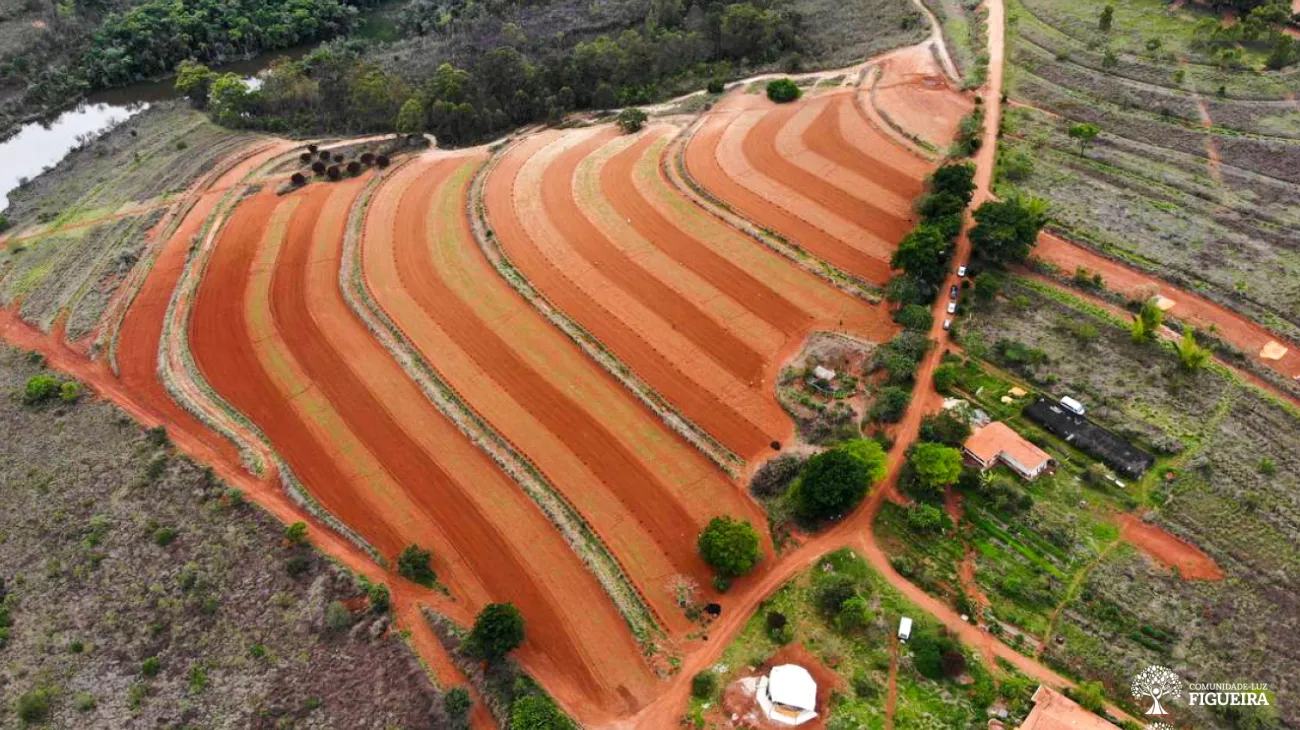
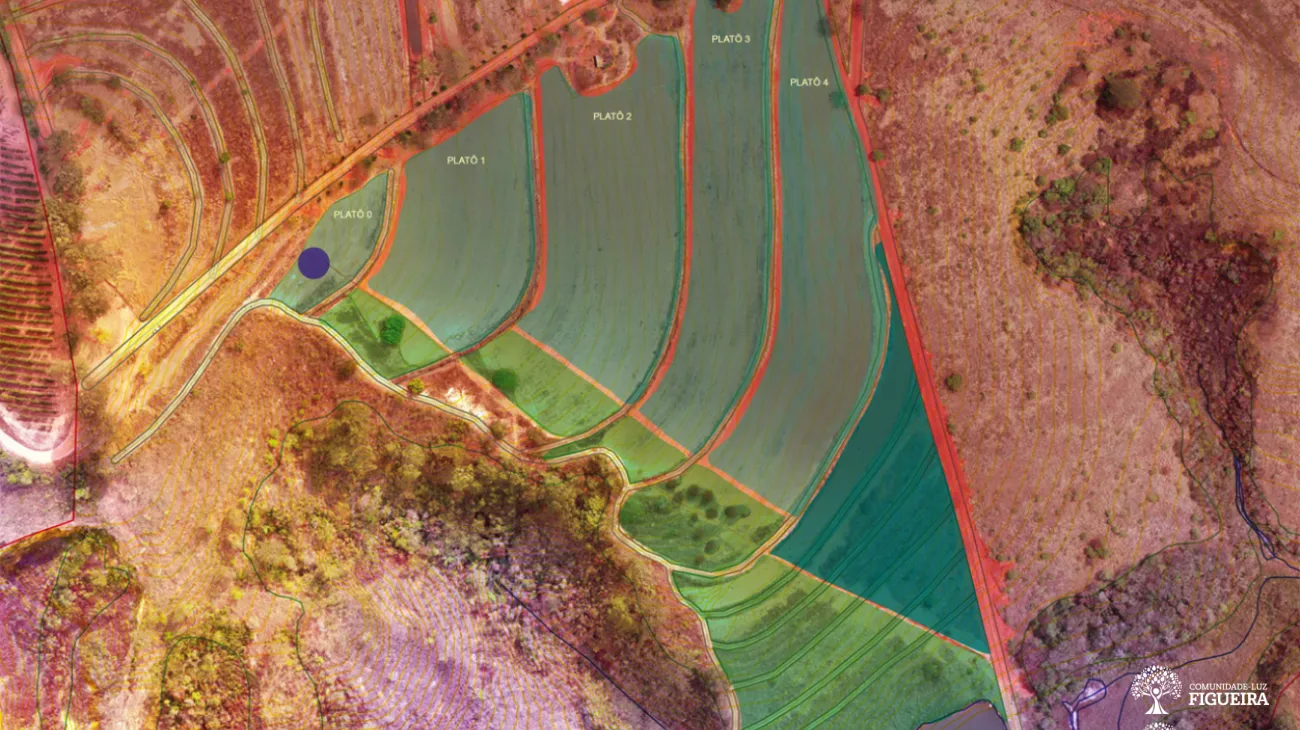
Levels 1, 2, 3 and 4 were destined, on their lands, as an experimental field for the production of grains with rotation cycles of crops and a mixture of green manure for the improvement of the structure and life of the soil, as well as for the grain cultivation practices with the direct planting system. Thus, each level is subdivided, every 10 meters, by agroforestry lines designed in a forest arrangement where fertilized species and native species predominate, as a principle of regeneration and establishment of the reforestation area. Among them: eucalyptus, gliricidia, toucaneiro, palo santo, mutambo, guapuruvu, rose ipe, cinnamon, in addition to other biodiverse species.
In this current cycle we are implanting, through conferences (with members of the community and collaborators) the so-called plateau 0 - upper level of the agroforestry project. Geographically it represents the top of the hill, with the strategy of establishing a reforestation area that allows the development of the native forest for the preservation of the soil and water infiltration through the roots of the implanted trees. This allows the creation of a reservoir and storage of groundwater, feeding and benefiting the entire AFS 2 hill.
The AFS 2 project teaches us, and at the same time shows, the regenerative capacity of nature when the human being participates and accompanies its cycles and rhythms, creating new forests and producing food, simultaneously.
The agroforestry systems, in view of regeneration and reforestation, present a dynamic and intelligent strategy for these times.
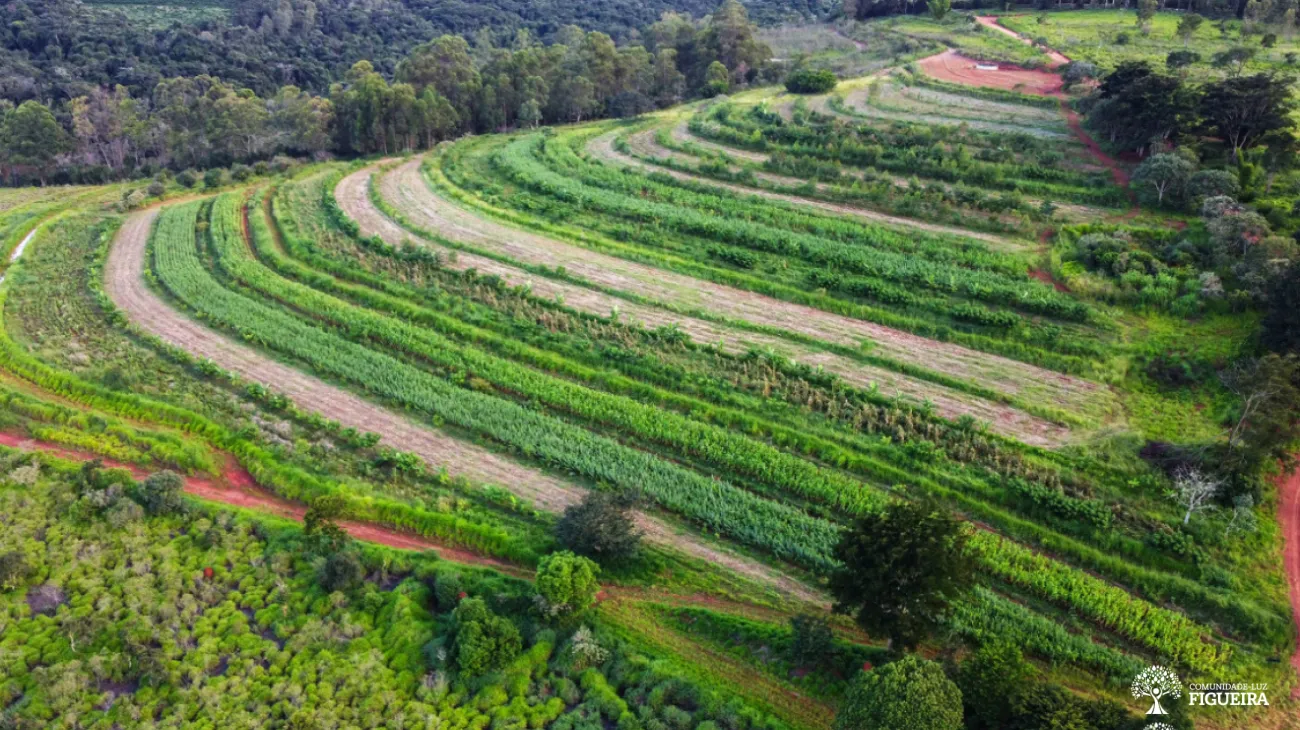
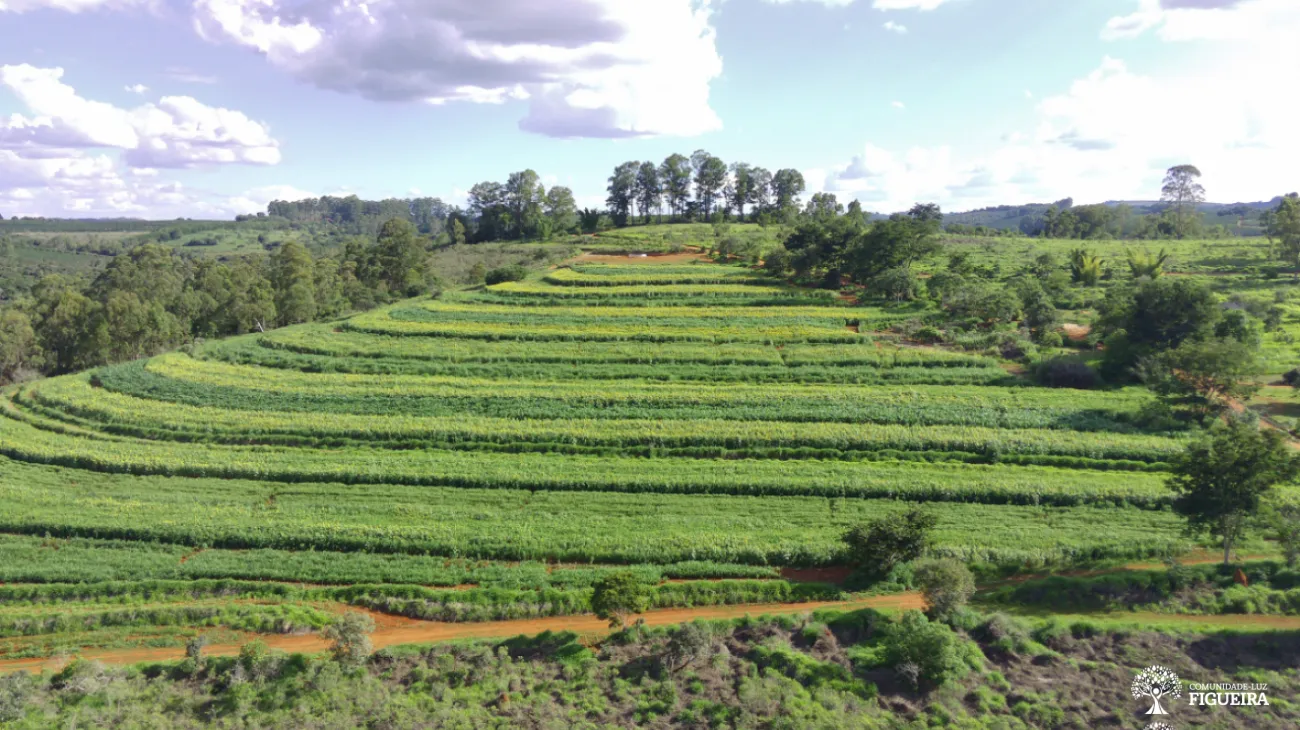
HELP SUPPORT THIS PROJECT!
For spontaneous collaborators click here.
To visit the Light Community of Figueira click here.
